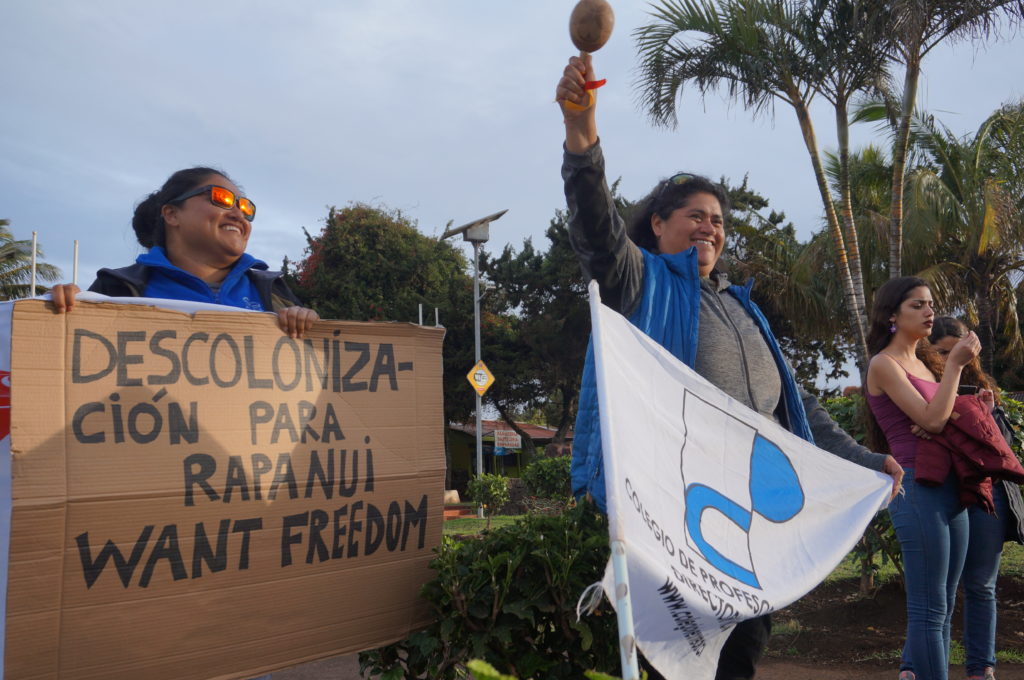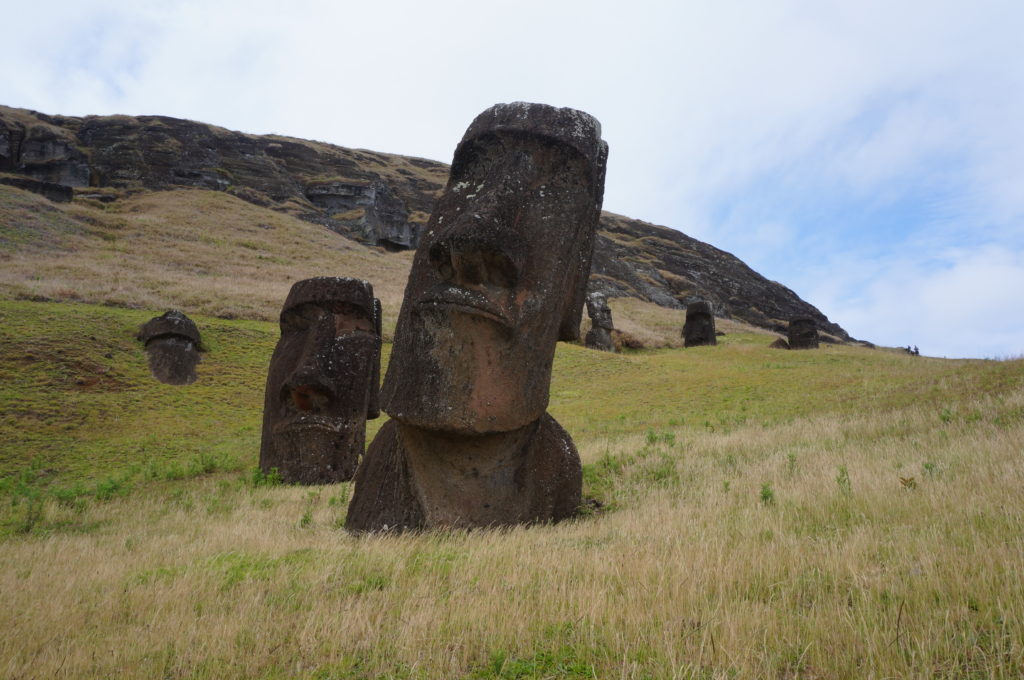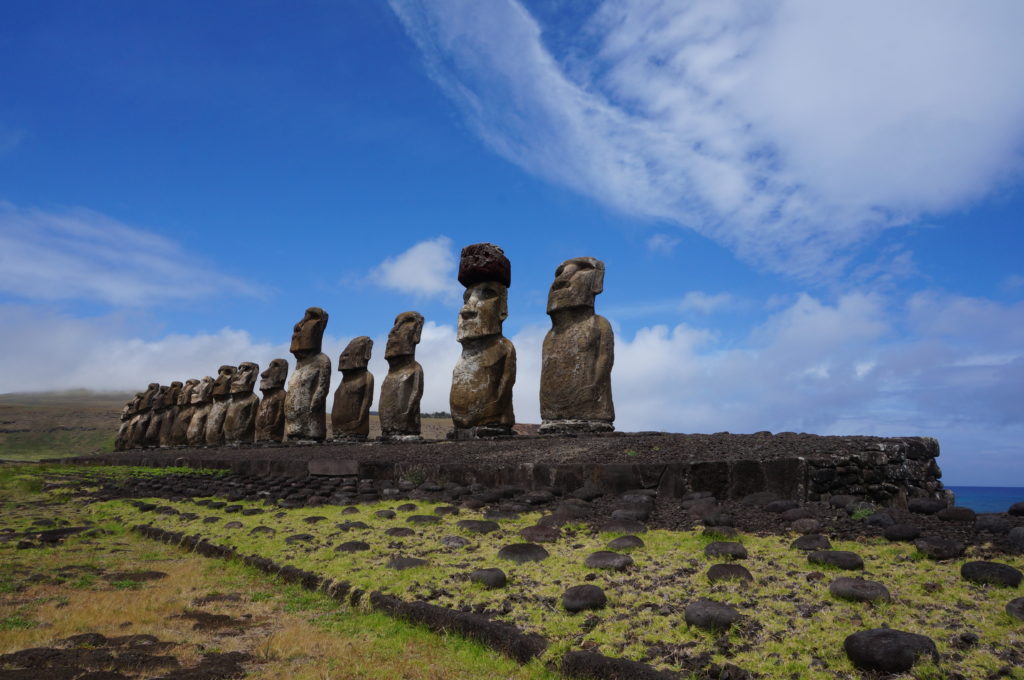The sound of banging metal pans echoed from the square as the day’s light started to dim on Hanga Roa, Easter Island’s capital.
Since last October, this cacerolazo had been playing relentlessly across Chile –a sound of defiance and protest against an unequal social and economic system.
Just days after mass demonstrations erupted in Santiago on 18 October 2019, sparked by a rise in the capital’s metro fares, the protests had travelled 4,000km.
“We are here in this fight, we are here with our Chilean brothers, the people, the Mapuche,” said Paula Tepano, from the Rapanui Indigenous community, who works in tourism in Easter Island.
Tepano held a cardboard sign blowing in the fierce Pacific wind. It reads “Rapanui want freedom.” Though they’re far away, islanders hope that this time Chile is listening.

Rapa Nui, or Easter Island, is a distant speck in the Pacific ocean thousands of kilometres west of Chile. Its Indigenous Rapanui community comprise half of the 6,000 people living in the most remote populated island on the planet.
Though they’re separated by distance both in culture and the thousands of kilometres of ocean between them, the estallido social became a bridge between Rapa Nui and the continent.
Communities have united over calls for better healthcare, access to education, higher pensions and wages, among other demands that call for an end to rampant inequality in the country.
“We support the protests of the Chilean citizens because we understand the effects of, for example, the AFP (Chile’s privatized pension system), the healthcare system, the education system – these are things that have been going wrong for a long time,” Tepano said in an interview earlier this year, before the pandemic halted any form of protest.
“Health is more of a privilege than a right, on the continent and here too,” Tepano added.
Teacher Elena Barra Edmond said the metro costs that sparked off the protests in Santiago do not affect islanders, the cost of living does. With no industry on the island, everything, even gas, is imported.
“Healthcare is a privilege. We don’t have a good hospital. If I want to go to the doctor I have to get up at four in the morning to get in a queue until eight in the morning. And the dentist – forget about it. This isn’t normal. So we’re united, we’re speaking out for all,” the 51-year-old said.
‘A long history’
Rapanui was annexed by Santiago in 1888 and made a province of the Valparaiso region, which lies more than 3,600km across the Pacific ocean. Rapanui people are not guaranteed self-determination nor territorial rights. Like the Chileans on the mainland who say they are suffering under the privatisation of public services, the Rapanui share similar grievances. But there is more: Barra carries the flag of Rapa Nui to every protest here on the island. For her it symbolizes a call for autonomy.

“Here are two entities, the people of Rapa Nui are here to preserve their culture, traditions, their language. We are two: Rapa Nui, and Chile. But we are all one with the people. I think the people have woken up.”
Chile’s social uprising has accelerated what the Rapanui and Chile’s other Indigenous communities have been calling for for years: better healthcare and basic infrastructure like water and electricity, a preservation of their culture and land, and loudest of all, self-governance.
“It’s a long history,” said Alejandro Parellada, a senior advisor on land rights and self government in Latin America for the International Work Group for Indigenous Affairs.
“There have been different movements among the Rapanui to talk about their autonomy. It is a central issue among Indigenous communities to talk about self-governance.”
In 2013, for example, Rapa Nui threatened to lodge a complaint against the Chilean government that they had robbed them of their ancestral lands at the international court of justice in the Hague. In 2017, they went to the Inter-American Commission on Human Rights (IACHR) denouncing the human rights violations the Rapanui people have suffered since 1888, specifically referencing police repression on peaceful demonstrations. In 2010, for example, Chilean security forces evicted two clans who had occupied buildings and sites in the national park claiming the land belonged to them. Military and police forces responded violently.
The Council of Elders and the Rapa Nui Parliament have also submitted a petition to the IACHR to obtain recognition of their rights to the lands and waters of Rapa Nui. Only 13 percent of the island’s lands are under the control of the Rapa Nui; the rest is shared between a private commercial company and the Rapa Nui National Park.
“All that we have here –light, water– is private,” Barra said. “What do the Rapanui have? Nothing.”
In recent years there have been calls for tighter restrictions on tourism and immigration, desperate to protect the environment, and maintain the Rapanui culture and language.
A new path?
Parallada suggested Chile’s social uprising may provide a new path for the Rapanui. “Autonomy means the rights to have different education, different justice system, rights to health and communication in their own language. There is a new political context now so it may be possible to start to get more autonomy,” he told Toward Freedom.
With a referendum due on 25 October to decide if and how to rewrite Chile’s constitution, which was formed under the military dictatorship of Augusto Pinochet, Indigenous groups hope this can provide a new way to assert their rights.
“The different social groups are trying to use the momentum, and they are going to discuss a new constitution in Chile. It could be very significant, not only for Rapanui but for all Indigenous people in Chile. It may be an opportunity to discuss a new structure of land, specific rights for different groups,” Parellada said.

Ignacio Rojas, an anthropologist based on Easter Island, said there are two ways to look at the protests: a “symbolic protest – a mobilization that we’ve always been waiting for,” and “an opportunity for all communities.”
“It’s an opportunity to put their demands on the table,” he said, having been to many community meetings where autonomy and collective land ownership appear as the top demands.
“The movement for a new constitution opens a political opportunity to bring these topics forward one more time […] to give these topics the hierarchy they deserve. It’s a historic demand, but with this movement, it brings it to the centre” Rojas said.
Tepano added that while there have been many protests, the people on the island now want new laws.
“The people are protesting because they want change now. More than anything we want our liberty.” said Tepano. “We want to administer ourselves, our own businesses, we want our Moai back, we want to work on our land, our culture, and not with the laws they put on us. We don’t want to be under the constitutional laws that colonized us.”
Author Bio:
Naomi Larsson is a British-Chilean journalist who covers human rights and social justice. She was shortlisted for an Amnesty Media Award for her reporting on the Chilean uprising.
